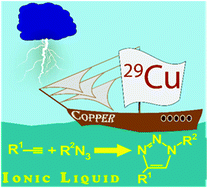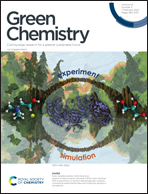Generation, regeneration, and recovery of Cu catalytic system by changing the polarity of electrodes†
Abstract
Considering a complete life cycle of metal catalysts, metals are usually mined from ores as salts (MX′n), industrially processed to the bulk metal (M) and then converted into the salts again (MXn) to be used as catalyst precursors. Under catalytic conditions, metal salts undergo transformations to form catalytically active species (MLn), and the anion (X) is typically converted to waste. Thus, there are extra steps before a catalytic process may start, and the chemical transformation involved therein generates considerable amounts of waste. Here, we study the strategy for merging electrodissolution with catalysis to skip these extra steps and demonstrate efficient waste-minimized transformations to access Cu catalysts from the metal. Bulk metal from an electrode can be transformed directly into a catalytic reaction under the action of electric current. As a representative example, dipolar addition of azides to alkynes was successfully catalyzed by copper metal. The reaction was carried out in an ionic liquid (IL), which acted simultaneously as an electrolyte, a solvent and stabilizer of the formed catalytically active species. The used catalyst can be regenerated (or reactivated, if necessary) by application of reverse polarity of electrodes and directly reused again. For metal and solvent recovery, the ILs used were easily separated from copper species by passing an electric current. The applicability of the copper-catalyzed transformation was additionally tested for cross-coupling of thiols with aryl halides (the Ullmann reaction), click reaction with calcium carbide and three-component azide–halide–alkyne coupling. The mechanism of copper dissolution from an electrode was studied, and the intermediates were identified by means of XRD, X-ray and HRESI-MS.

- This article is part of the themed collection: 2022 Green Chemistry Hot Articles


 Please wait while we load your content...
Please wait while we load your content...